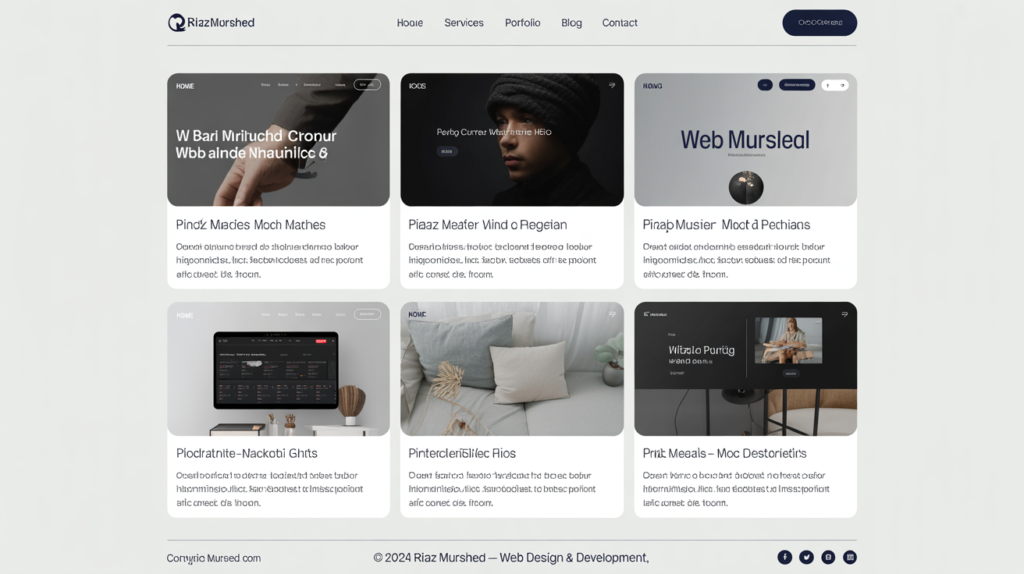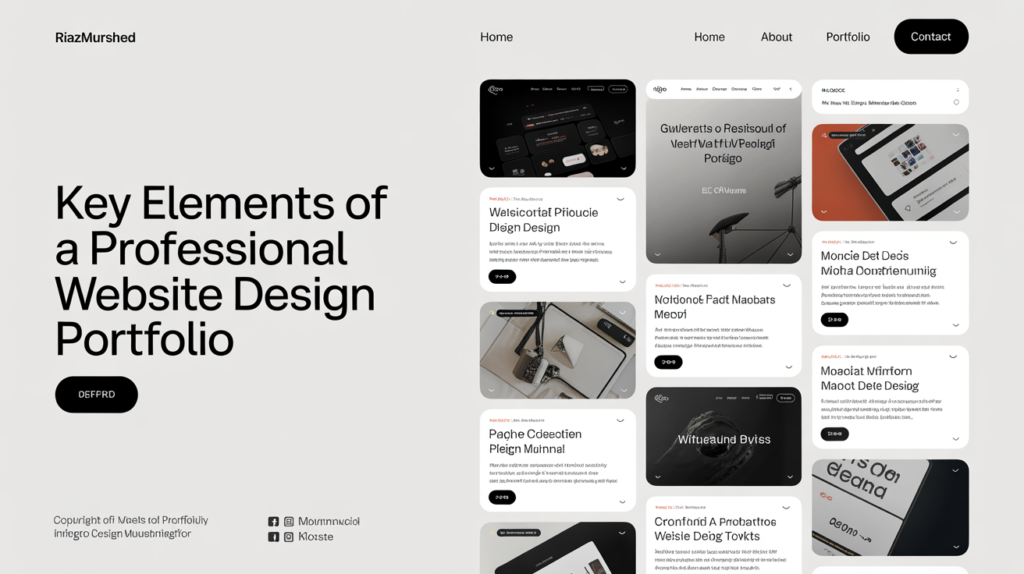A Website Design Portfolio is more than just a collection of web projects. For professionals, agencies, and freelancers in Stamford, UK, it acts as the digital shop window that attracts potential clients, communicates your design approach, and demonstrates credibility. Whether you are an established agency or a freelancer entering the market, having a refined portfolio is essential to win new business opportunities.
In today’s competitive environment, clients look for proof of expertise before hiring a designer. A well-structured web design portfolio not only shows technical ability but also tells the story behind the projects. It reveals creativity, problem-solving skills, and a clear understanding of client goals.
This guide provides a step-by-step framework to build a professional, compelling portfolio tailored for Stamford businesses.
Why a Website Design Portfolio Matters in Stamford
Stamford is home to a vibrant mix of independent businesses, professional firms, and growing startups. Each of these companies needs a strong digital presence to remain competitive. When they search for web design services, they evaluate portfolios first.
Benefits of a Strong Portfolio:
- Builds trust and credibility with potential clients
- Differentiates your business from local competitors
- Demonstrates both creativity and technical expertise
- Attracts higher-value projects and long-term contracts
Example: A Stamford design agency that added detailed case studies to its portfolio reported a 30% increase in client inquiries within six months.

Key Elements of a Professional Website Design Portfolio
A portfolio must go beyond screenshots. To be effective, it should combine visuals, context, and storytelling. Below are the essential elements every Stamford-based web designer should include.
| Element | Purpose | Example in Practice |
|---|---|---|
| Homepage | First impression, professional branding | Clean layout, easy navigation, Stamford-based introduction |
| Case Studies | Show design process and results | Before-and-after comparison of a Stamford retailer’s site |
| Testimonials | Build trust with real voices | Client feedback from local Stamford businesses |
| Service Highlights | Outline expertise clearly | Responsive design, e-commerce, CMS integration |
| Contact Information | Easy communication | Call-to-action with phone, email, and local office address |
Step 1: Define Your Audience
Your portfolio must speak directly to your target audience. A Stamford law firm will value professionalism and trust, while a café may want creativity and modern aesthetics.
Questions to ask:
- Who are the ideal clients?
- What industries dominate Stamford’s economy?
- What design style best fits their expectations?
Step 2: Select Your Best Work
Quality matters more than quantity. A professional web design portfolio should highlight 6–10 strong projects rather than 30 average ones.
Tips:
- Include diverse industries (retail, hospitality, legal, creative).
- Highlight projects with measurable results (traffic increase, sales growth).
- Use real-world Stamford clients when possible to strengthen local appeal.
Step 3: Tell the Story Behind Each Project
Instead of simply showing the final design, explain the context:
- What problem did the client face?
- What design approach was used?
- What tools and platforms were integrated?
- What measurable results were achieved?
Example: A Stamford fitness studio needed online booking. The portfolio entry explained how a new scheduling system increased appointment bookings by 45%.
Step 4: Present Work Visually
Clients need to see the design. Use:
- High-resolution mockups
- Before-and-after comparisons
- Interactive demos or live links
- Video walkthroughs of projects
Step 5: Showcase Skills and Services
A web design portfolio should include sections outlining specific services, such as:
- Responsive website design
- E-commerce development
- SEO-friendly design
- UX and UI optimization
- Branding integration
Step 6: Add Testimonials and Case Studies
Testimonials from Stamford clients add authenticity. A case study provides measurable outcomes, making the portfolio more persuasive.
Example: A Stamford-based accountant shared a testimonial stating that a redesigned site improved client inquiries by 50%.
Step 7: Optimize for Search Engines
To ensure visibility, your portfolio must follow SEO best practices.
- Use target keywords like Website Design Portfolio Stamford naturally
- Optimize images with alt tags
- Structure content with headings and subheadings
- Link internally to related services
Step 8: Keep the Portfolio Updated
Outdated projects can hurt credibility. Regularly update with recent work, new design styles, and evolving client needs.
Pro Tip: Refresh the portfolio every 6–12 months to reflect current trends.
Website Design Portfolio Ideas for Stamford Professionals
| Portfolio Style | Description | Example |
|---|---|---|
| Minimalist | Clean layout focusing on visuals | Black-and-white design with bold typography |
| Case Study Driven | Storytelling through detailed breakdowns | Explaining Stamford business success stories |
| Creative Showcase | Emphasizes bold graphics and animations | Ideal for artists and creative agencies |
| Professional Corporate | Formal design targeting firms and agencies | Best suited for legal or financial sectors |
| Mixed Media | Combines text, images, video, and interactive elements | Strong for dynamic and modern branding |
Example Scenario
Imagine a Stamford digital agency that specializes in small business websites. Their updated portfolio includes:
- A café website with online menu integration
- A law firm redesign with enhanced SEO performance
- An e-commerce fashion store that doubled sales
- A nonprofit organization site with improved donations
By presenting not only the visuals but also the outcomes, the agency positions itself as a results-driven partner.
Frequently Asked Questions (FAQ)
What is the most important part of a Website Design Portfolio?
The most important part is the case study section, as it combines visuals, context, and measurable results.
How many projects should I include in my portfolio?
Between 6 and 10 high-quality projects are recommended. More than this can overwhelm viewers.
Should I include personal projects in my portfolio?
Yes, if they demonstrate creativity and technical skill, especially for freelancers starting out in Stamford.
How often should I update my web design portfolio?
Update every 6–12 months to reflect new skills, styles, and projects.
Does SEO matter for a Website Design Portfolio?
Yes. Optimizing your portfolio for local search ensures potential clients in Stamford can find you easily.
Final Thoughts
A Website Design Portfolio is more than a gallery of work. For Stamford-based professionals and agencies, it is a business growth tool. By presenting work strategically, telling compelling stories, including testimonials, and keeping the design updated, you build trust and attract clients who value your expertise.
When done correctly, a portfolio becomes both a visual showcase and a marketing asset that drives long-term business success in Stamford and beyond.


